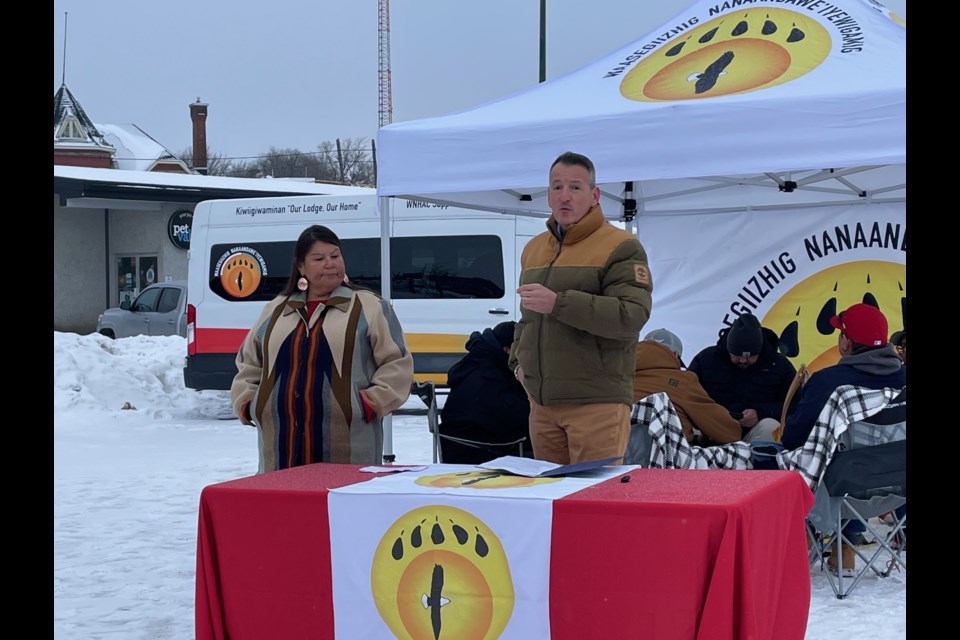KENORA — The sound of drums will soon be replaced by the sound of construction in downtown Kenora as a shovels hit the ground this spring on a new multi-million dollar health facility.
“We’re excited to announce a new facility that’s been long overdue for the Anishinaabe people of our territory and our region,” Charlene Mandamin, WNHAC board president.
Waasegiizhig Nanaandawe’iyewigamig Aboriginal Health Access Centre (WNHAC) announced Thursday, that they're getting a new $28-million facility located at the corner of First Street South and Chipman Street, the site of the old Kenwood Restaurant site that burnt down. The new building will replace four plus locations around Kenora serving as many as 15,000 registered clients in the Grand Council Treaty Three Area.
“That excitement comes with enhancing our service delivery the we are currently providing," said Mandamin. "It’s a holistic health care system with emotional spiritual, mental health, physical and having that opportunity has been a long time coming.”
Not only will this put all their staff into one location to better serve the community, but it will also help with patient care, overall health care experience and convenient access to primary health care services with a focus on early care rather than treatment when someone is already sick.
The new facility is a three-story building that will incorporate modern technology blended with traditional healing practices.
The idea for this project began in 2014 when it was clear that their services were quickly outgrowing their space. Plans were drafted in 2023 but were redrafted when they realized that they had already outgrown that original plan. An expanded building plan was created, and funding needs grew.
Kenora MPP Greg Rickford, Minister of Indigenous Affairs and First Nations Economic Reconciliation, was on hand to make the announcement that the Ministry of Health is funding this project. By having more first line and preventive care available, the centre will relieves some of the issues surrounding urgent reactive care he said.
“When (people) fall through the gaps, whether they're First Nation or non-First Nation, they wind up in an urgent care centre or an emergency room and that puts pressures and strains (on hospital services). You can see the effects as they reverberate out and make our health care system here more difficult than it should be,” he said.
Rickford noted that this project is a part of the plan to create a cohesive health care system in the area, to provide services to everyone, filling in major health care gaps.
“What we strive for is to keep as many health care services right here in Kenora so people have to travel less, recognizing the new physician services in surrounding communities means better health outcomes.”
